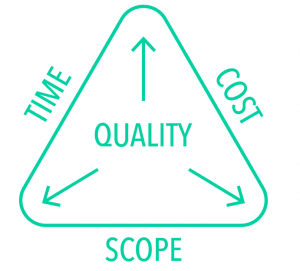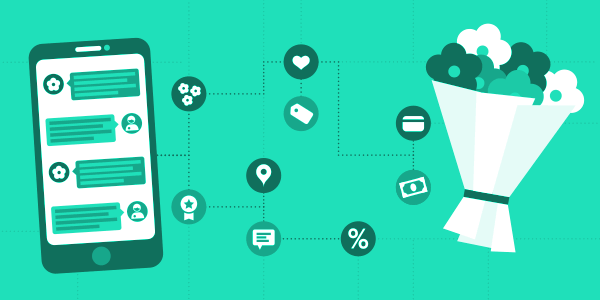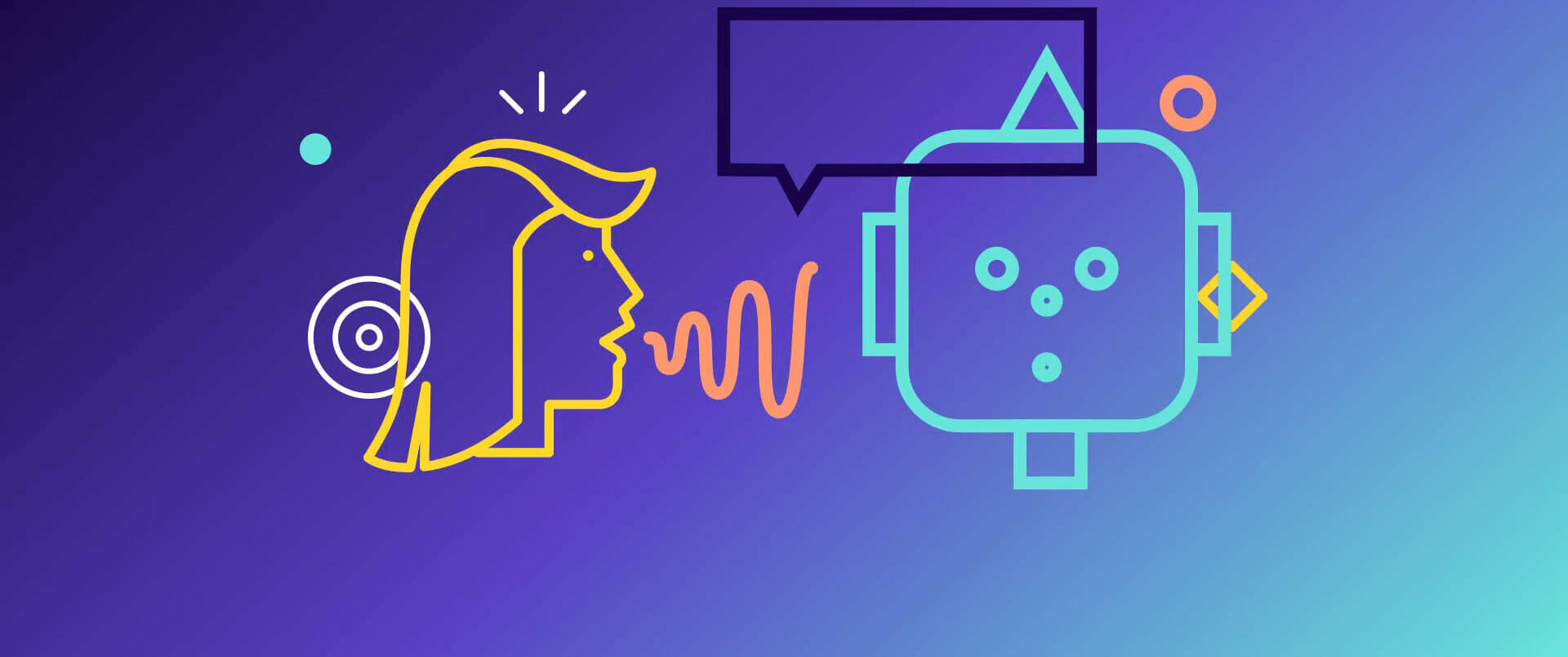The chatbot industry is growing really quickly. That is why clients do not have time to wait long for a product. They need to get their chatbot right away or they will go to a competitor. With this in mind, this article series is about questions that help us to gather requirements of the product, to propose new solutions, and plan testing processes in a short time, and flexible projects related to chatbot development for different brands.
To develop and provide a high-quality product to the customer, we need to follow the Project Management Triangle: Time, Cost, and Scope. Those are the key items for success.

When there is only a lack of time, it’s hard sometimes to provide a good quality product. Often some item is being neglected in favor of another. So how can you manage and plan your work with a customer and a team to reach your goal when you have a project with a short timeframe?
As we know, one of the first phases of development is requirements analysis, so we work with requirements within requirements engineering activities. These activities may include four big stages: requirements analysis, formalization, validation, and management.
There are no well-defined requirements in present projects we work on because a client wants to analyze and validate the idea first through the MVP or to launch a product that has potential analogs or competitors on production. Otherwise, a client has the general idea of the product and our mission is to help to develop the idea and to propose an optimal expert solution in the shortest term. In that kind of project, writing user stories as an approach to requirements really helps. A user story is a short description of something that customers will do when they come to your website or use your application/software, focused on the value or result they get from the user experience.

Whatever approach we choose to engineer the requirements, this phase really relates to testing. These two are key items of a product’s quality.
The testing planning approach depends on:
- project specificity;
- time and team resources;
- technical architecture complexity;
- using third-party services and platforms;
- a blast zone, and risks related to different spheres of using chatbot.
Also, it depends on if we offer post-production support and what the next project phase will be.
The rapid development of AI technologies, a gradual reduction of the number of mobile app downloads, and the dissemination of messenger platforms that support bots really push forward the message not to move the chatbot release to the back burner.
The first question to ask ourselves before starting a project is “who will use a product we develop?” The more we know about them, the better it is for developing and chatbot testing process.
First of all, we are to figure out the kind of target audience of the chatbot: who are the customers and the end users?
To find out more about target audience we use a statistical approximation of a client’s web-page traffic. We assume that the web-page audience will be the chatbot audience as well. Of course, there are specific stats for different messenger platforms on which chatbot will be developed. These stats also help us learn about target users.
How to build a chatbot personality?
The statistics give us useful information about the geography of users (country, language). Based on this information we can:
-
add to our chatbot some personality characteristics, some behavioral things according to users folk or traditions we’ve got to know;
-
create a multilanguage chatbot to cover more users (audience);
-
propose different messenger platforms for different target audiences;
-
select appropriate countries for stats for cross-platform and cross-device testing in order to get the best test-coverage.
Also, we get information about gender and age of users. It helps us a lot:
-
to create a chatbot personality and conversational UX (there are many types of research revealing how men and women chat and talk within messengers. For example, women prefer to use emoticons.);
-
to add an appropriate content to stay, and engage users growing bot retention according to age and gender;
-
to provide useful features that solve relevant user problems;
-
to create and describe suitable test cases according to behavioral characteristics of using messenger platform.
The answers to this first question simply and quickly give us useful information to create and provide high-quality and high-retention chatbots you may see in our portfolio.
Master of Code designs, builds, and launches exceptional mobile, web, and conversational experiences.





